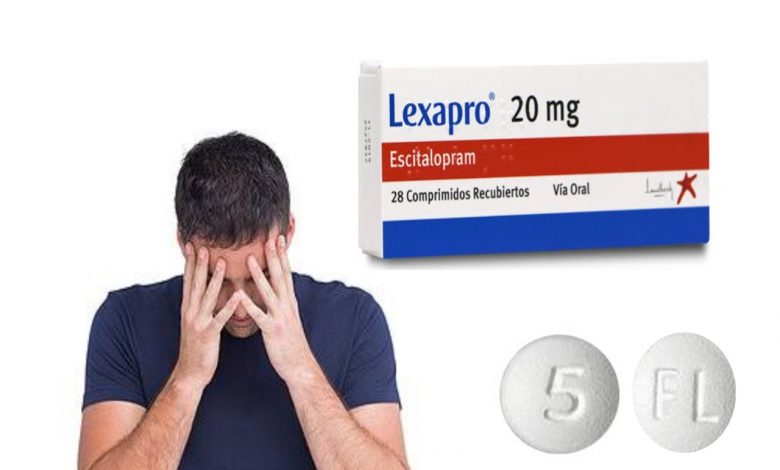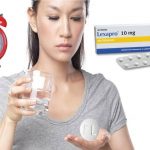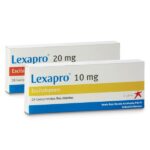10 Early Signs of Lexapro Withdrawal?

Withdrawal refers to the combination of physical and mental effects a person experiences after they stop using or reduce their intake of a substance such as alcohol and prescription or recreational drugs.
The various types of drug withdrawal syndromes may involve different combinations of physical, mental, and emotional symptoms—some of which can prove dangerous if left unmanaged.
If you have been using a substance with a high potential for dependency and you stop suddenly or abruptly or you cut down your use drastically, you can experience a variety of withdrawal symptoms. The intensity and duration of these withdrawal symptoms can vary widely, depending on the type of drug and your biological makeup.
What is Lexapro?
Lexapro (escitalopram) is a prescription drug. It’s available as an oral tablet and an oral liquid solution. It’s approved for use in adults and children 12 years and older.
The medication belongs to the class of drugs called selective serotonin reuptake inhibitors (SSRIs). It works by increasing the amount of the chemical serotonin in your brain. Having more serotonin helps decrease the symptoms of depression and anxiety. Lexapro (escitalopram) is not considered a monoamine oxidase inhibitor (MAOI). MAOIs work by slowing down the breakdown of serotonin and dopamine, another chemical in your brain. This also helps alleviate symptoms of depression. However, MAOIs have a higher risk of side effects and drug interactions than SSRIs such as Lexapro (escitalopram).
How should I take Lexapro (escitalopram)?
Take Lexapro (escitalopram) exactly as prescribed by your doctor. Follow all directions on your prescription label and read all medication guides or instruction sheets. Your doctor may occasionally change your dose.
The typical dosing for Lexapro (escitalopram) for depression or anxiety in adults and children 12 and over is 10 mg by mouth daily. Take the medicine at the same time each day, with or without food.
Measure liquid medicine carefully. Use the dosing syringe provided, or use a medicine dose-measuring device (not a kitchen spoon).
It may take up to 4 weeks before your symptoms improve. Keep using the medication as directed and tell your doctor if your symptoms do not improve.
Your doctor will need to check your progress on a regular basis. A child taking Lexapro (escitalopram) should be checked for height and weight gain.
Tell your doctor if you have any changes in sexual function, such as loss of interest in sex, trouble having an orgasm, or (in men) problems with erections or ejaculation. Some sexual problems can be treated.
Do not stop using Lexapro (escitalopram) suddenly, or you could have unpleasant withdrawal symptoms. Follow your doctor’s instructions about tapering your dose.
10 Early Signs Of Lexapro Withdrawal
Lexapro withdrawal symptoms can be different for different people and can range from mild to severe. Symptoms depend on:
• How long it was used Lexapro or any other SSRI medications
• A person’s age
• Physical and psychological characteristics
• The withdrawal process used (suddenly or slowly)
• The prescribed dosage
According to the authors of a 2012 study, the signs and symptoms of Lexapro withdrawal are divided into two stages.
Stage one symptoms of Lexapro withdrawal: In this stage, a person may experience the following symptoms:
• a sensation of electrical jolts or tingling through the body
• agitation
• headaches
• insomnia
• irritability
• nausea
Stage two symptoms of Lexapro withdrawal: In stage two a person may experience:
• changes in weight
• depression
• difficulty tolerating or managing stress
• impaired memory
• increased anxiety
• irritability
• issues with concentration
• mood swings
• sexual side effects, such as delayed orgasm
• suicidal thoughts
As earlier stated, the timeline and severity of Lexapro withdrawal symptoms will vary from person to person. Not everyone experiences all of the symptoms, and some people experience no withdrawal symptoms at all.
In most people, Lexapro withdrawal symptoms may persist for several weeks or even months. During this time, a person can take some steps to help reduce the severity of symptoms.
Side effects
The side effects of Lexapro seem to be the same in both men and women. The side effects are slightly different for adults and children.
Lexapro side effects in adults can include:
• anxiety
• constipation
• dizziness
• dry mouth
• infection
• loss of appetitive
• nausea
• sexual problems, such as decreased sex drive and erectile dysfunction
• shaking
• sleepiness
• sleeping trouble
• sweating
• weakness
• yawning
Lexapro side effects in children and adolescents can include the above, plus:
• increased thirst
• abnormal increase in muscle movement or agitation
• nosebleeds
• trouble urinating
• heavy menstrual periods
• slowed growth and weight change
There have been some cases of decreased appetite and weight loss with the use of Lexapro in children and adolescents. Your child’s doctor may check their height and weight during treatment.





